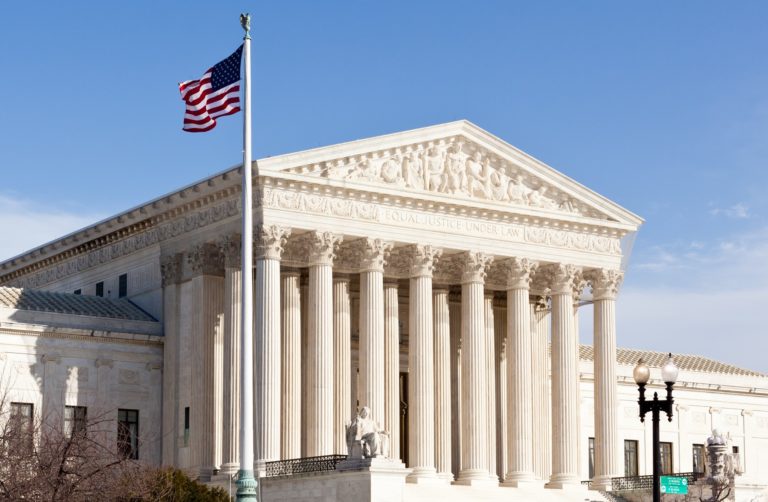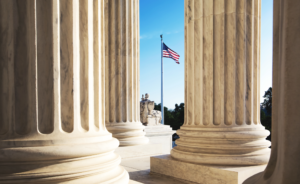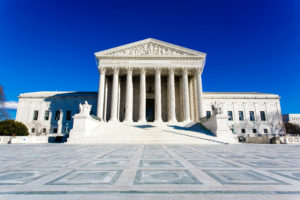Supreme Court postmortem: Recent decisions are a mixed bag for individual liberty and constitutional limits

While there’s typically significant fanfare surrounding each Supreme Court term, the Supreme Court’s latest decisions on environmental issues, property rights, the administrative state, and school choice were a decidedly mixed bag.
Maui v. Hawaii Wildlife Fund
Even though there are limits on what the Clean Water Act can regulate, it’s not easy figuring out what those limits are. The act gives the Environmental Protection Agency (EPA) the responsibility to protect navigable surface waters, while assigning regulation of ground water to the states. But what if something is put into groundwater that eventually flows into surface water? That was the dilemma in Maui v. Hawaii Wildlife Fund, where county officials had pumped treated wastewater into the ground that later reached the Pacific Ocean.
After environmentalists sued to force the EPA to regulate Maui’s wells, the Ninth Circuit Court of Appeals held that if effluents are discharged into groundwater that might someday reach a navigable water, then the EPA must regulate. In an opinion by Justice Stephen Breyer, the Supreme Court gave a definite “maybe.” While rejecting the Ninth Circuit’s “one-drop” rule, the Court also didn’t adopt a literalist view of the Clean Water Act. Instead, we now have a multi-factored test to determine whether putting something into the groundwater is the “functional equivalent” of putting it directly into a navigable waterway. Expect much more litigation over what “functional equivalent” means.
Atlantic Richfield v. Christian
To preserve the environment, we must also protect private property rights. After all, to better enjoy their land and enhance its value, landowners must be able to protect it from pollution and other threats. But federal laws have often made that difficult by removing landowner remedies against polluters.
In Atlantic Richfield v. Christian, the issue was whether homeowners could force a mining company to do more than the EPA required to remove contaminants from their property. While copper smelting in Butte, Montana, did wonders for America’s industrial development, it left a legacy of hundreds of square miles of land contaminated with heavy metals, making it the nation’s largest superfund site. Dissatisfied with the pace and thoroughness of the EPA’s mandated cleanup, the landowners tried to pursue traditional common law remedies.
But the Supreme Court refused to go along. Because the federal law is so comprehensive, there is no room, Justice John Roberts wrote, for private actions. While this does not absolve the mining company of responsibility, neither is it likely to have to clean up the contaminated neighborhoods to the satisfaction of the homeowners.
Seila Law v. Consumer Financial Protection Bureau (CFPB)
The rise of the administrative state has given us a vast bureaucracy that impacts every nook and cranny of our lives, raising serious constitutional concerns. With our three separate branches of government, the people should know who is responsible for what, and they must be able to exercise their votes to enforce accountability. But what if an agency is accountable only to itself? Under traditional separation of powers doctrine, the president could fire anyone who worked for him. Not so in the case of the CFPB.
In Seila Law v. CFPB, the target of an enforcement action argued that the CFPB, created in 2010 under the Dodd-Frank financial reform law, is unconstitutional because the president cannot fire the bureau’s chief. The Court agreed—but only to a point, holding that despite what Dodd-Frank said, the Constitution requires that the agency director could be fired by the president, so the public would know who is responsible for the CFPB’s actions. But the Court also refused to declare the entire CFPB to be unconstitutional, as some had hoped. The victory here for accountability was modest, but it was a victory, nonetheless.
Espinoza v. Montana Department of Revenue
As in many parts of the country, parents in Montana have grown increasingly dissatisfied with their government-run schools. To provide parents better choices, the Montana legislature established a program that allows donors to scholarship organizations to get a tax-credit for their contributions. The scholarships helped parents of modest means with tuition to send their children to private schools. Unsurprisingly, teachers’ unions were adamantly opposed. Because the scholarships might help children attend parochial schools, the state supreme court threw the program out on the theory that the tax-credits represented government aid to religious schools. Then, Espinoza v. Montana Department of Revenue reached the Supreme Court, where the justices held that the action was plainly discriminatory and violated the Constitution’s prohibition against the infringement of religion. Parents may once again get help to send their kids to nongovernment schools.
Overall, the Supreme Court’s latest decisions had only a few fireworks, and a mixed record of liberty-enhancing decisions. It wasn’t the blockbuster some had hoped for, but there were some modest victories we can take to heart.







